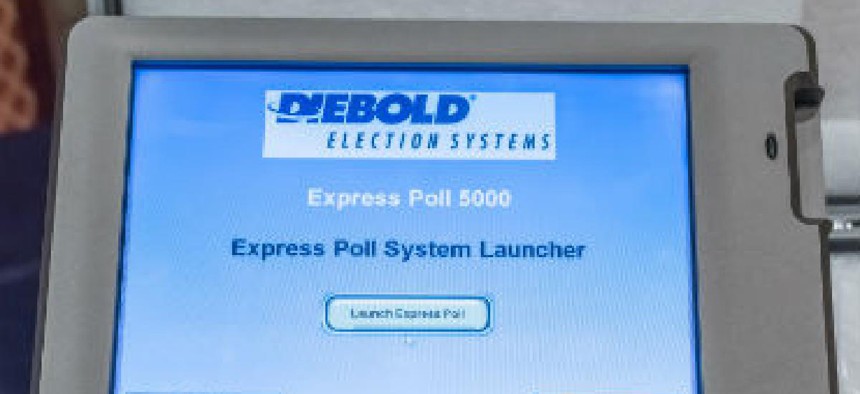Election officials: 'We are going to need more assistance'

At the Election Assistance Committee's latest meeting, officials warn of "enlightening and frightening" planning exercises and a need for additional funding.

A hacked voting machine on display at the recent DEFCON hacker conference in Las Vegas. (Photo credit: Bing Wen / Shutterstock.com)
The Department of Homeland Security continues to work with state and local governments to protect election systems as critical infrastructure. At an Aug. 16 public meeting of the federal Election Assistance Commission, however, officials made clear that risks still remain.
EAC Vice-Chairman Thomas Hicks pointed to a recent planning exercise in New York City as an example. That exercise, conducted in July, resulted in some surprising results that remain classified.
“I found the meeting very informative, enlightening and frightening,” Hicks said. “I would encourage every state to hold a similar meeting with election officials, emergency management folks and IT officials.”
Noah Praetz, director of elections in Cook County, Ill., told EAC members how his team has been working to mitigate the risks. Cook County has invested in “applied forensic” tools to make sure machines are counting ballots accurately, he said. His board of elections tested the 2016 voter data three times to ensure that nothing was hacked.
That sort of sustained attention will be needed going forward, he stressed. Since former DHS Secretary Jeh Johnson designated state elections assets as U.S. critical infrastructure in January, Praetz said he sees counties and cities as the front line for defending against election fraud.
“There is no substitute for on-the-ground expertise, but with this new threat space, we are going to need more assistance,” he said.
Praetz and other election official also encouraged counties and cities to share information on voter fraud incidents. “The threats are fast and breaches are becoming more common,” Praetz said. “The hope of staying ahead should come from sharing information.”
DHS, meanwhile, is already preparing for the 2018 elections, EAC Executive Director Brian Newby said.
“For us, show time is Jan. 1," he said, "and we need to have further discussions about the way cybersecurity threats will be communicated [versus the way that we did it before.]”
Part of the challenge of securing election systems is the limited money still available from the Help America Vote Act (HAVA) of 2002, which provided funds to states for equipment, guidance and policy development.
While nearly $3.5 billion was awarded to states and territories, there is just $4.3 million in allocated funds that states have yet to request, according to the EAC's 2016 grants expenditure report.
“The requirements of HAVA are not a one-time expense,” EAC Director of Grants and Oversight Mark Abbott said. Elections officials must "replace the equipment that is aging out, and they are looking for new funds -- whether it is federal financing through HAVA or state financing.”
The EAC commissioners also heard testimony on the 2016 Election Administration and Voting Survey released in June. The biannual EAVS report includes information about the election process, including data on registration, turnout, absentee voting and polling places.
The EAVS found that state motor vehicle facilities remain the most popular place individuals chose to register to vote at 32.7 percent, but online registration increased dramatically over the past four years, making up 17.4 percent of the total.
A version of this article first appeared in GCN, a sister publication to FCW.
Editor's note: This article was changed Aug. 17 to correct Mark Abbott's title and the location of the New York planning exercise.


